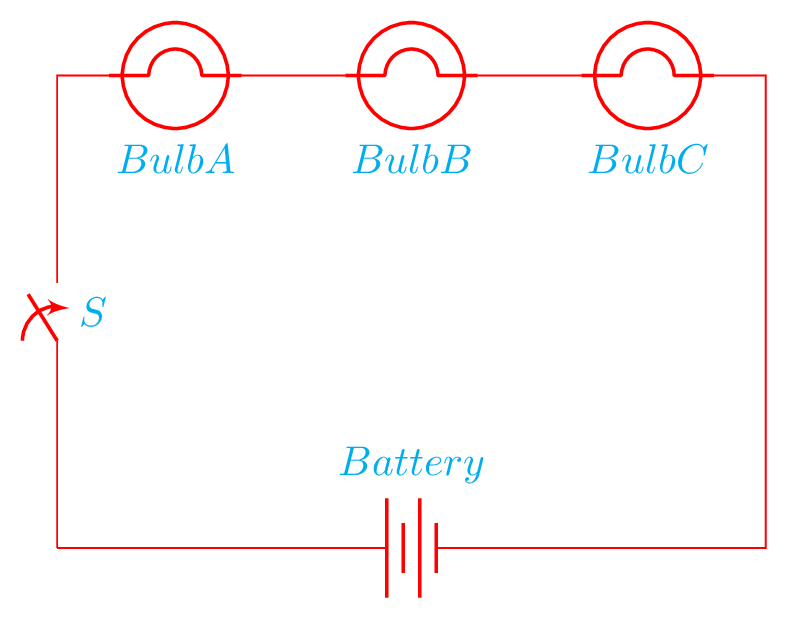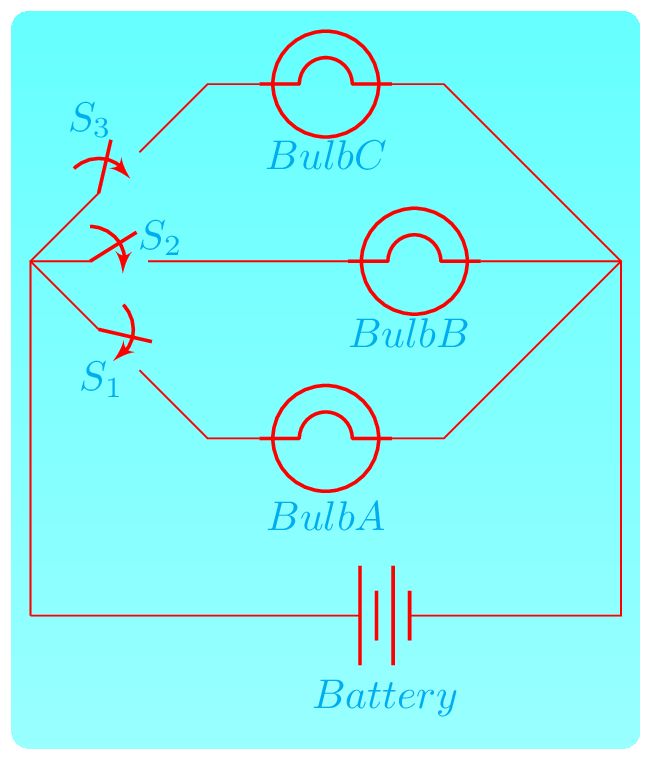Subsection 5.2.3 Electrical Circuits
An electrical circuit is a network of electrical elements (such as resistance (bulb), battery, conductor, switch, etc.) through which current can flow in a closed path. Electrical circuits can be of two types,
-
Series Circuit: in this type of circuits all the electrical components are connected one after another in such a way that the same current flows through each component as shown in the figure below. An example of a series circuit is a string of Christmas lights, where each bulb is connected to the next in a line. If one bulb burns out, the entire circuit is broken and none of the lights will turn on.

Figure 5.2.1. Series circuit -
Parallel Circuit: in this type of circuits all the electrical components are connected side by side in such a way that the voltage across each component is the same as shown in the figure below. An example of a parallel circuit is a house’s electrical system, where different appliances are connected to the same circuit but have their own separate paths for current to flow through. If one path is broken or one appliance stops working, it doesn’t affect the other appliances or the overall circuit.

Figure 5.2.2. Parallel circuit
series & parallel circuit To change from series to parallel circuit, Please hold the bulb and rotate the circuit in the simulation.
2
javalab.org/en/serial_parallel_circuit_en/